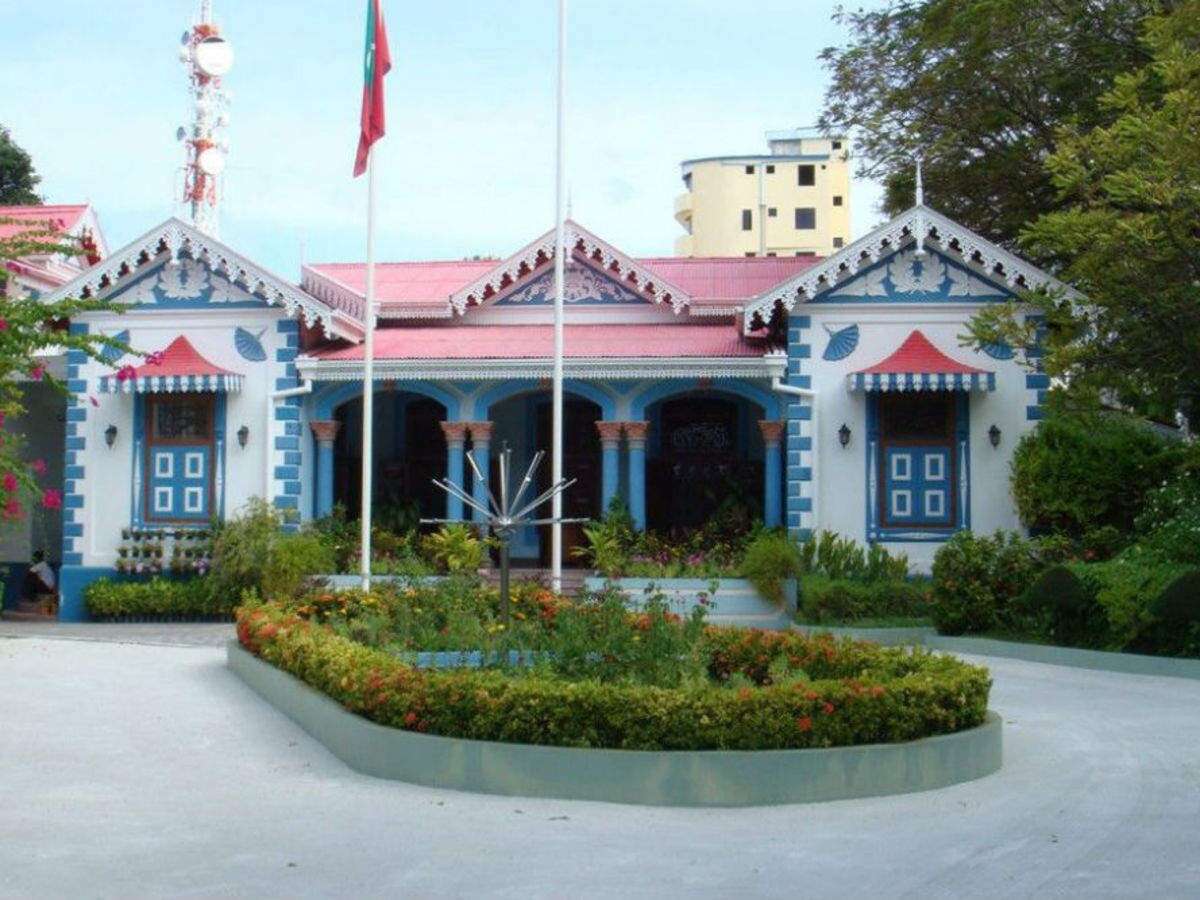The National Museum of Maldives is a must-see attraction for visitors to the country. Located in the capital city of Malé, the museum is an important hub for preserving the history and culture of the Maldives. It houses a variety of artifacts that illustrate the long history of the Maldives and the development of its unique culture. From ancient stone tools to traditional clothing, jewelry, and pottery, the museum is a treasure trove of history and culture. Whether you’re a visitor to the country or a lifelong resident, a visit to the National Museum of Maldives is sure to be a memorable and educational experience.
Location
The National Museum of Maldives is located in Male, the capital city of the Maldives. It is situated in Sultan Park, next to the Grand Friday Mosque and Sultan’s Park. The museum was opened in 1952, making it one of the oldest museums in South Asia. It is a hub for both local and international tourists as it offers a glimpse into the country’s culture and history. Visitors can explore the museum’s numerous galleries, filled with artifacts from throughout the country’s past.
History
The National Museum of Maldives was established in 1952, and it has been preserving the history and culture of the Maldives ever since. In its early years, the museum’s main focus was on preserving the unique Islamic heritage of the islands, including items such as coins, weapons, and books. As the years went by, the museum’s collections grew to include artifacts from all periods of Maldivian history, from pre-Islamic times to the modern day. The museum also houses an extensive ethnographic collection that documents the traditional lifestyles and customs of the Maldivian people. This includes items such as costumes, jewelry, tools, and a range of other cultural items.
The Collections
The National Museum of Maldives is home to an extensive collection of artifacts and objects that document the history, culture, and traditions of Maldives throughout the ages. From coins, stamps, and currency to ancient tools, jewelry, and manuscripts, the museum’s collections provide a vivid picture of how Maldivian life has changed over time. The museum also features various exhibits and galleries, such as the Islamic Gallery, which showcases the unique architecture, art, and culture of the Islamic world. Additionally, the Archaeology Gallery displays a range of artifacts from the earliest settlements in the country, while the Cultural Gallery offers insight into the culture and customs of the people of Maldives.
The Architecture
The National Museum of Maldives is housed in a beautiful colonial-style building that was built in 1952 by the British. It was originally the headquarters of the Resident Commissioner of the then-British Protectorate of the Maldives. The building features a striking blend of Islamic and European influences and includes many intricate details, such as decorative wooden balconies, stone courtyards, and ornate archways. The original building underwent renovations in 2018, which restored its classic architecture to its former glory. Today, the museum’s building is both a testament to Maldivian culture and a fascinating reminder of the country’s colonial past.
The Future
The National Museum of Maldives is an integral part of Maldivian history and culture, and as such, its preservation is a priority for the government and local citizens. The museum has plans to expand its collection and create new interactive experiences that will help people understand the culture and history of the Maldives. Additionally, the museum plans to continue its conservation efforts to preserve the artifacts and ensure their survival for generations to come. The National Museum of Maldives is a vibrant and important cultural institution that will be essential in helping to document and preserve the unique heritage of Maldives.
Building
The National Museum of Maldives was built in 1952 as a three-story building in the center of Male, the capital city of Maldives. It was constructed out of coral stone and other locally available materials. The museum was built with a modernist design and has been remodeled over the years to make it more visitor friendly. The museum is now a two-story building and houses different collections that showcase the culture, art, and history of the Maldives. Visitors can find artifacts from the ancient Buddhist period such as coins, statues, and pottery pieces from the 4th century AD. There are also samples from early Islamic cultures, including manuscripts written in Thaana script which dates back to the 17th century AD.
Destruction of pre-Islamic artifacts
The National Museum of Maldives is a treasure trove of history and culture, but it also serves as a reminder of the destruction of pre-Islamic artifacts throughout the country. Due to religious zeal and the ravages of time, many artifacts were destroyed before the museum opened in 1952. The destruction of these artifacts robbed future generations of an insight into the life and culture of the Maldivian people before the conversion to Islam in 1153 CE. Nevertheless, the National Museum of Maldives has done its best to conserve whatever remains of Maldivian heritage.
The museum’s collection includes Buddhist statues and sculptures from across the archipelago, silver coins from different eras, weapons used during battles with Portuguese forces, royal insignia of past monarchs, royal thrones, traditional ceremonial garbs worn by royals, coral carvings, ancient manuscripts, and several other items of historical significance. All these pieces tell stories about the struggles faced by the early inhabitants of this remote island nation. Furthermore, some of the sculptures and carvings demonstrate the skill of local artists from different eras and reflect their love for their country and its heritage. These objects are invaluable for researchers studying the development of the Maldivian culture over the centuries. Ultimately, the National Museum of Maldives gives visitors a glimpse into one of Asia’s most intriguing cultures and helps preserve its history for generations to come.

